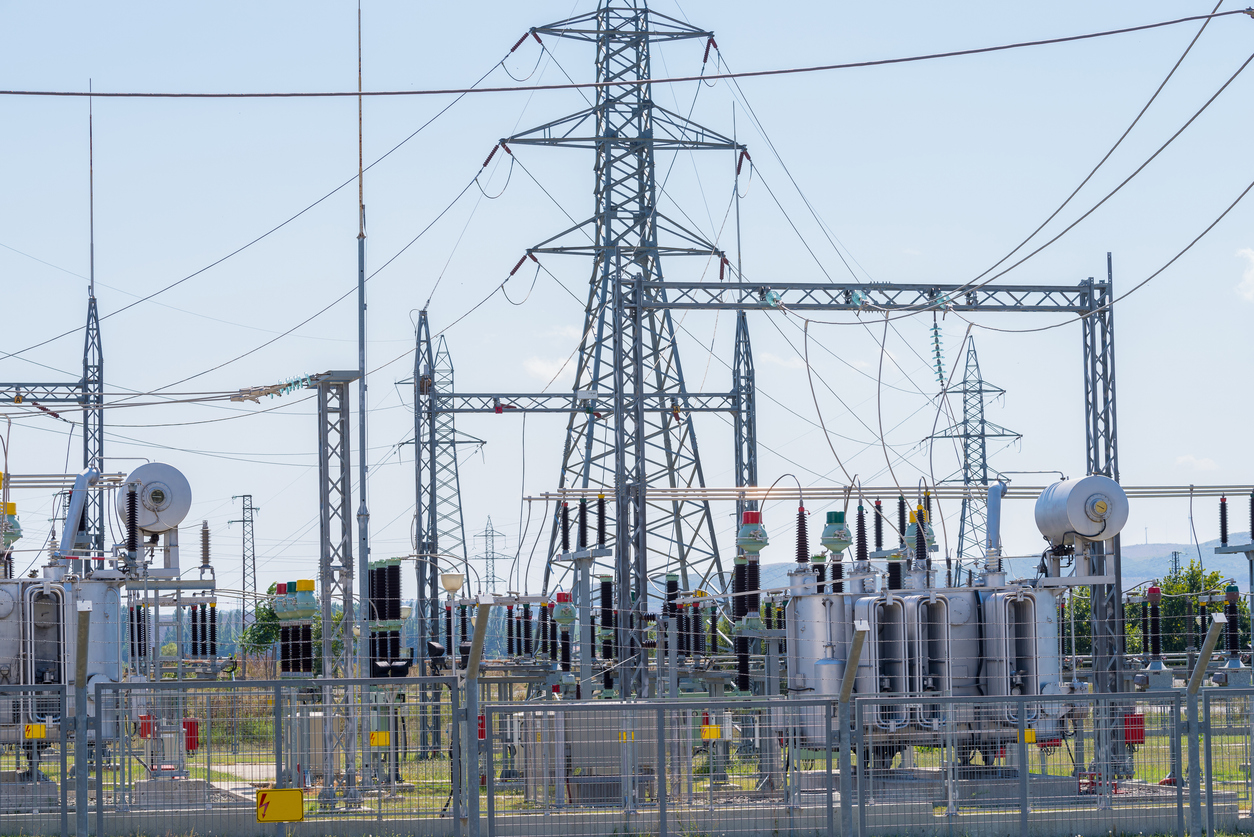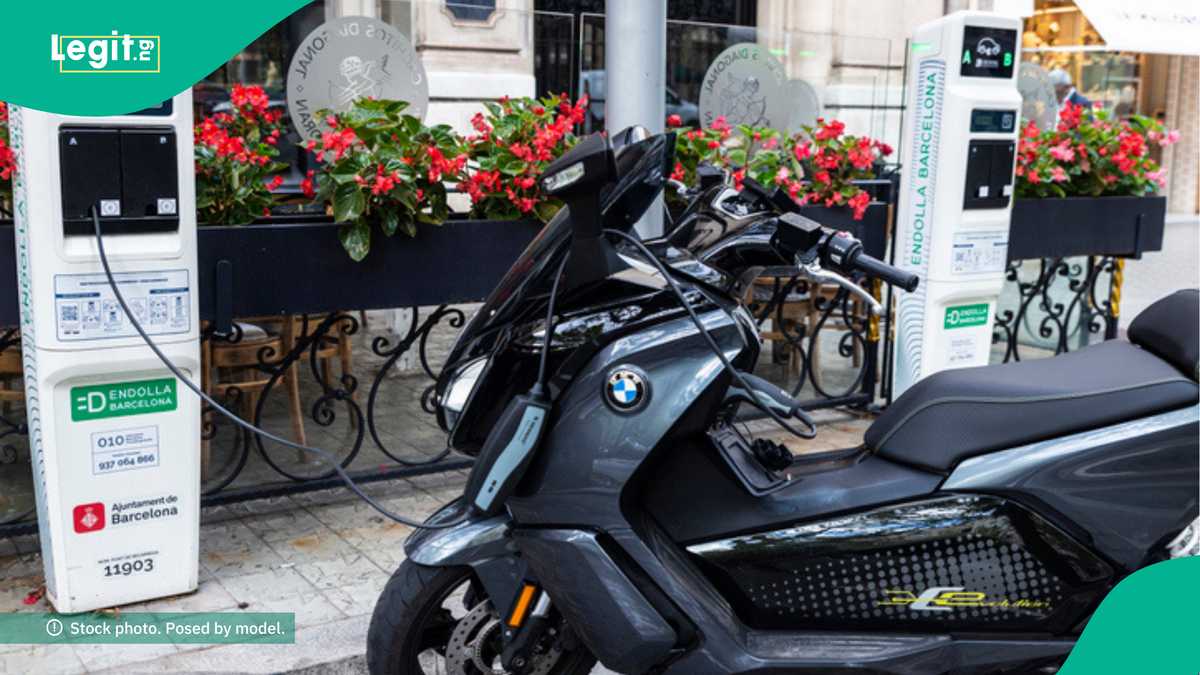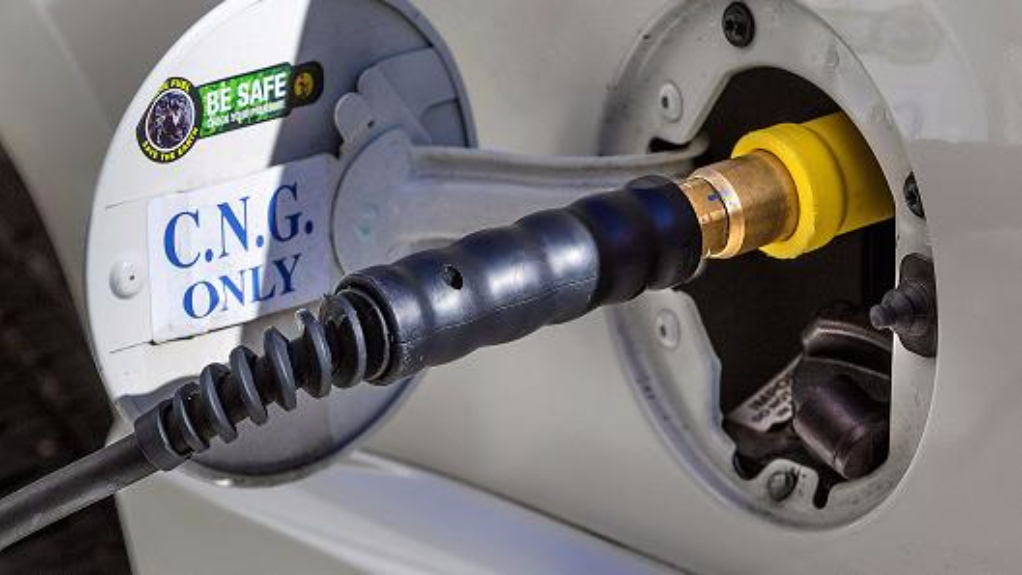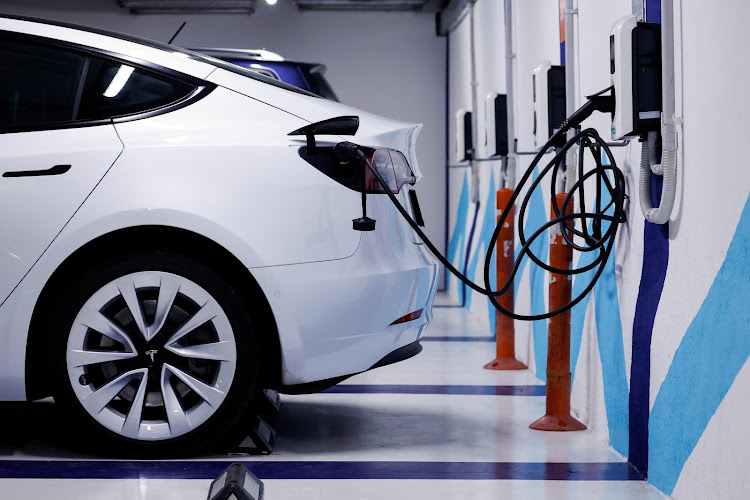
The popularity of solar EV charging
As EV drivers, the impact we have on the environment tends to be of significant importance to us. Buying an EV is one of the ways we seek to reduce our carbon footprint and our negative impact on the climate. As such, charging our EVs at home using renewable, homegrown solar energy has become increasingly popular in recent years.
Solar panels installed at home, on your roof, or elsewhere on your property generate 100% green and free electricity for powering your household appliances, and so can also be used to recharge your EV battery after your daily commute. Under the favorable conditions of a bright and sunny day, solar panels can recharge the average daily battery usage of EV drivers in under three hours.
Of course, few of us live in eternally sunny places. For most EV drivers, the impact of low light weather conditions – such as cloud and rain – is of understandable concern when it comes to their solar EV charging system’s capabilities.
Thankfully, solar panels do still generate renewable electricity on cloudy days, and therefore can still charge your electric car even when the sun is hidden behind the clouds. Understanding the relationship between cloud cover and solar panel efficiency will help you determine the viability of a home solar system for your EV charging needs. This article from EVBox explains how solar panels work in overcast weather, as well as how you can mitigate against low light by preparing for cloudy days with solar battery storage.
Before we begin, it’s important to note that most home solar panel systems will be used to power not only your EV home charging port but also household appliances, whose energy supply would therefore also be impacted by cloudy weather. For the purposes of our article, however, we will focus primarily on the impact of cloud cover on solar EV charging.
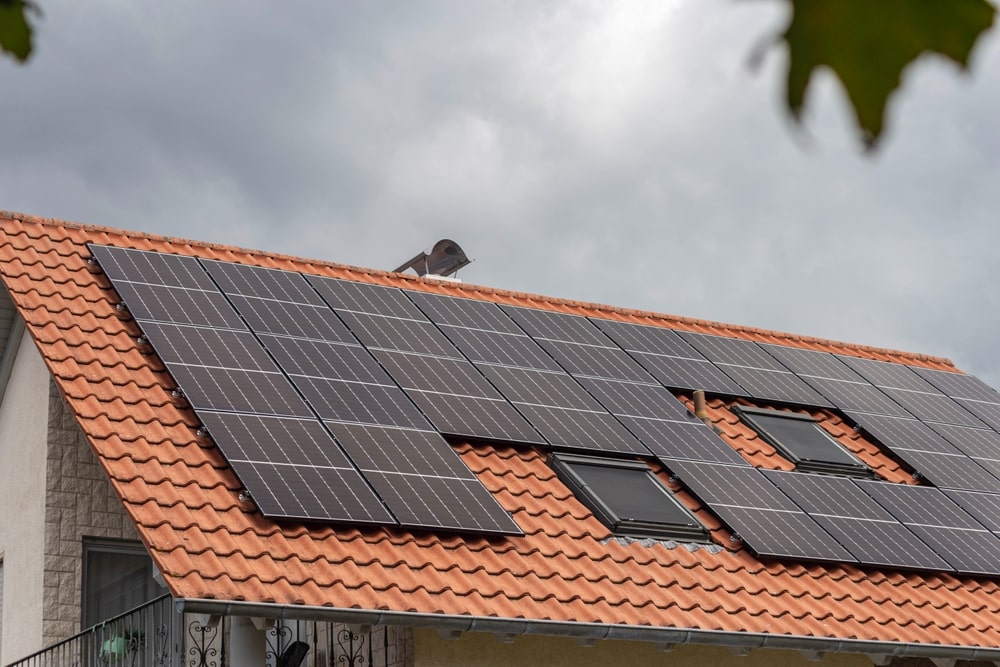
Do solar panels work on cloudy days?
Yes, but to give a more elaborate answer it’s important to understand what solar panels are made of and how they work.
Solar panels are made of semiconductor materials, typically silicon, which capture sunlight and generate electricity through a chemical reaction process called ‘the photovoltaic effect,’ hence why they are also sometimes known as ‘PV panels.’
You can think of the solar panels on your roof like some of the houseplants in your home. Whilst many houseplants benefit most from warm, bright, and direct sunlight, they don’t stop living and breathing on cloudy days.
Like houseplants, solar panels generate energy from light particles, which are still found in diffuse daylight – the type of light available on cloudy and rainy days.
The catch is that fewer light particles reach your solar panels on cloudy days, and as such the panels are only able to produce a small fraction of the electricity they would on sunny days. Depending on the density of cloud cover, solar panel efficiency on cloudy days may range anywhere from 10-75% of their full potential. With very light cloud cover, solar panels may still generate 75% of their maximum output, however, under normal-to-heavy cloud cover, this efficiency drops to around just 10-33%.
To put it simply, the darker the day, the less electricity your panels will produce for you to recharge your EV with, via your home charging port.
What about when it rains?
Rainy days, like cloudy ones, mean less light for your solar panels to work with. Despite the rain, however, solar panels will still produce electricity with which you can power household appliances and recharge your electric car’s battery.
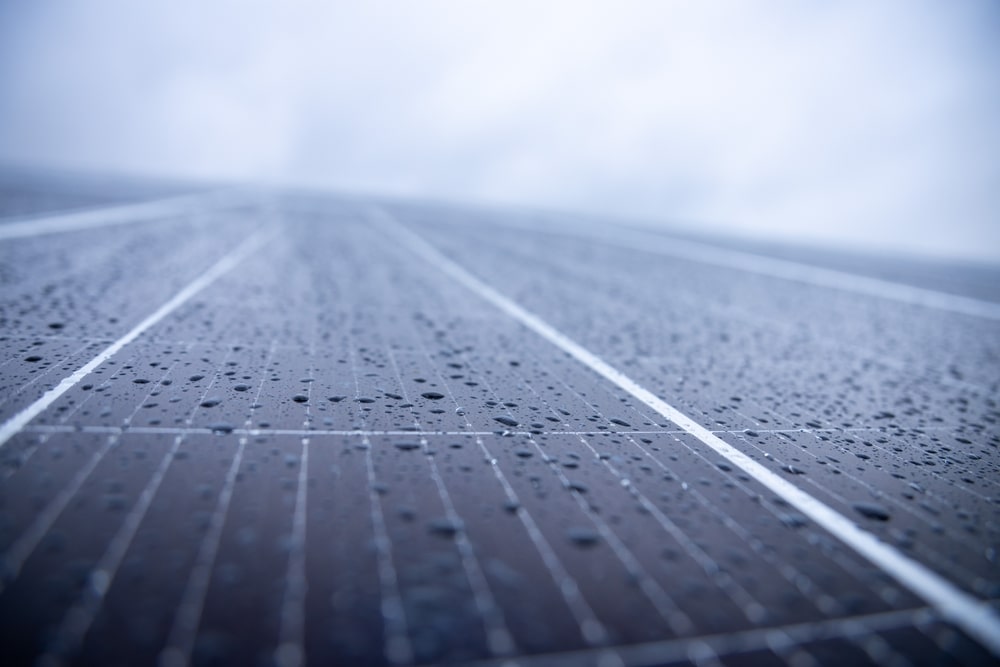
Interestingly, rain can actually be beneficial for solar panel efficiency, since rainwater helps to keep your panels clean and free from dust and debris: both of which, if left to accumulate, can reduce the effectiveness of your panels.
Exploring EV solar charging potential in cloudy weather
As discussed above, depending on the density of cloud cover, your solar panel output is liable to drop to just 10-33%, when compared to the amount of electricity (measured in kWh) that they can produce on sunny days.
For example, if you had ten 300W panels installed at home, capable of producing 13.5kWh of green electricity on a sunny day, then on cloudy days this output would drop to between 1.35kWh and 4.46kWh.
The impact that cloudy days have on solar EV charging capacity depends on a few factors, the most important being:
- The amount of charge you use when driving on the average day
- Your EV’s battery capacity and kWh usage per mile/kilometer
- The full potential kWh output of your solar panel array under sunny conditions
Let’s say for example that your EV uses about 6.4kWh of energy covering 20 miles (32km) a day. On sunny days, our example solar setup, generating 13.5kWh, would produce more than twice the electricity required to replenish your car’s battery. However, on cloudy days, those same panels may produce less than half the required electricity.

Setting realistic expectations about solar EV charging on cloudy days
It is important to be realistic about the charging capacity of your solar panel array, especially if you live in darker, rainier, cloudier climes such as those in northern Europe or on the east coast of North America.
Generally speaking, under anything but sunny or very lightly cloudy conditions, most household solar EV charging systems in cloudier climates may not produce enough energy to replenish the average charge consumed by your EV.
Thankfully, there is an increasing array of affordable and effective technologies available to help you ensure that you meet your EV-charging needs even on the most overcast of days.
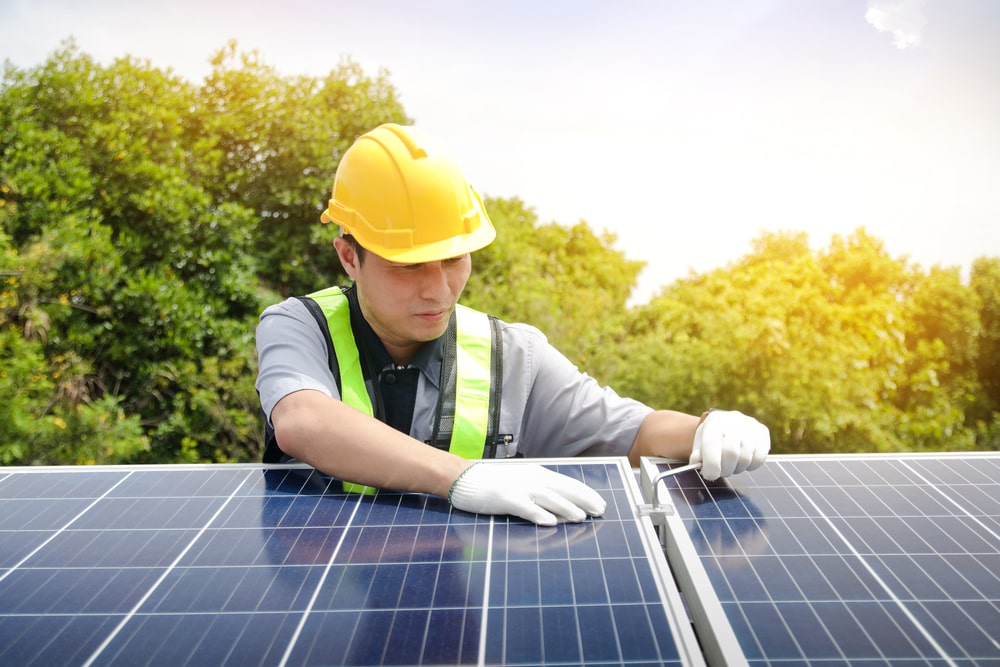
Technologies for enhanced charging in cloudy weather
There are two primary pieces of technology in any solar EV charging setup that dictate the capacity of the system to consistently charge your EV regardless of the weather: high-efficiency panels and battery storage.
High-efficiency Panels
The solar industry is becoming an increasingly important part of the global shift toward a carbon-neutral world. As such, the resources injected into the industry are producing some interesting technological developments. For example, thirteen years ago the average efficiency of a solar panel was around just 12%. Today, high-efficiency monocrystalline silicon solar panels are approaching the limits of their potential, with efficiencies pushing the 30% mark. Almost three times as efficient as their earlier incarnations, today’s residential solar panels are thus also three times as effective at producing electricity under cloudy conditions.
Even more exciting is the news that a new type of solar panel cell, a perovskite-silicone “tandem” cell, has recently been developed, capable of taking solar panel efficiency well beyond 30%. With solar as the future of both domestic and industrial energy, these breakthroughs in solar panel technology offer a hopeful view of solar EV charging capabilities in years to come, even on cloudy days.

Equally as encouraging is the steady drop in the price of solar panels. In 2009, the average household panel cost $8.50 USD per watt. As of 2023, this has dropped to just $1-$1.50 per watt.
By investing in high-quality solar panels for your solar EV charging system, you increase the potential electrical output of your array under any weather condition for years to come.
Battery storage and ‘solar-plus-storage’ systems
Solar-plus-storage systems are one of the most foolproof ways to provide yourself with a consistent and reliable source of free renewable energy. Battery storage for solar panels is readily available and capable of storing the surplus solar electricity not consumed by your EV or household appliances on a sunny day. With batteries linked to your panels, you retain 100% of the energy they produce for use as and when you need it.
In the context of EV charging on cloudy days, a solar-plus-storage system provides you with an additional source of renewable energy. Not only can you still charge your EV with the electricity generated by your panels under cloudy conditions, but you can top-up the deficit with energy stored from previously sunny days.
Depending on the average balance of sunny-to-cloudy days in your area, the combination of high-efficiency panels with a quality battery storage system can help you overcome the hurdle of charging your EV with solar in cloudy conditions.
Conclusion
Despite the assumptions and understandable concerns of EV drivers charging their cars using household solar, solar panels absolutely do still produce electricity on cloudy days. Even under the darkest, rainy, cloudy, or stormy conditions, panels will continue to produce at least 10% of their maximum potential energy output. Under light cloudy conditions, panels can produce about 75% of their potential electricity output.
Whilst it is important to be realistic about the limitations cloudy weather imposes on solar EV charging, there are plenty of ways to prepare for poor weather and mitigate against its negative effects.
On one hand, solar panel technology is improving and becoming more affordable year-on-year. This means that the best residential solar panels available today are better at charging EVs in cloudy conditions by many degrees when compared to those produced just a few years ago. On the other hand, integrating battery storage into your solar EV charging system enables you to retain surplus electricity generated on sunny days for use as a backup power source on cloudy ones.
Together, high-efficiency panels and battery storage systems can make the effects of cloudy days on solar EV charging next to negligible.
To learn more about charging your electric vehicle using the power of the sun, head to the EVBox blog.


